What Is a Sales Strategy? How to Build One for Your Business
Build a strong sales strategy to drive growth. Discover proven methods, customer engagement tips, and examples to elevate business success.
Author: Shaik Asif
Build a strong sales strategy to drive growth. Discover proven methods, customer engagement tips, and examples to elevate business success.
Author: Shaik Asif
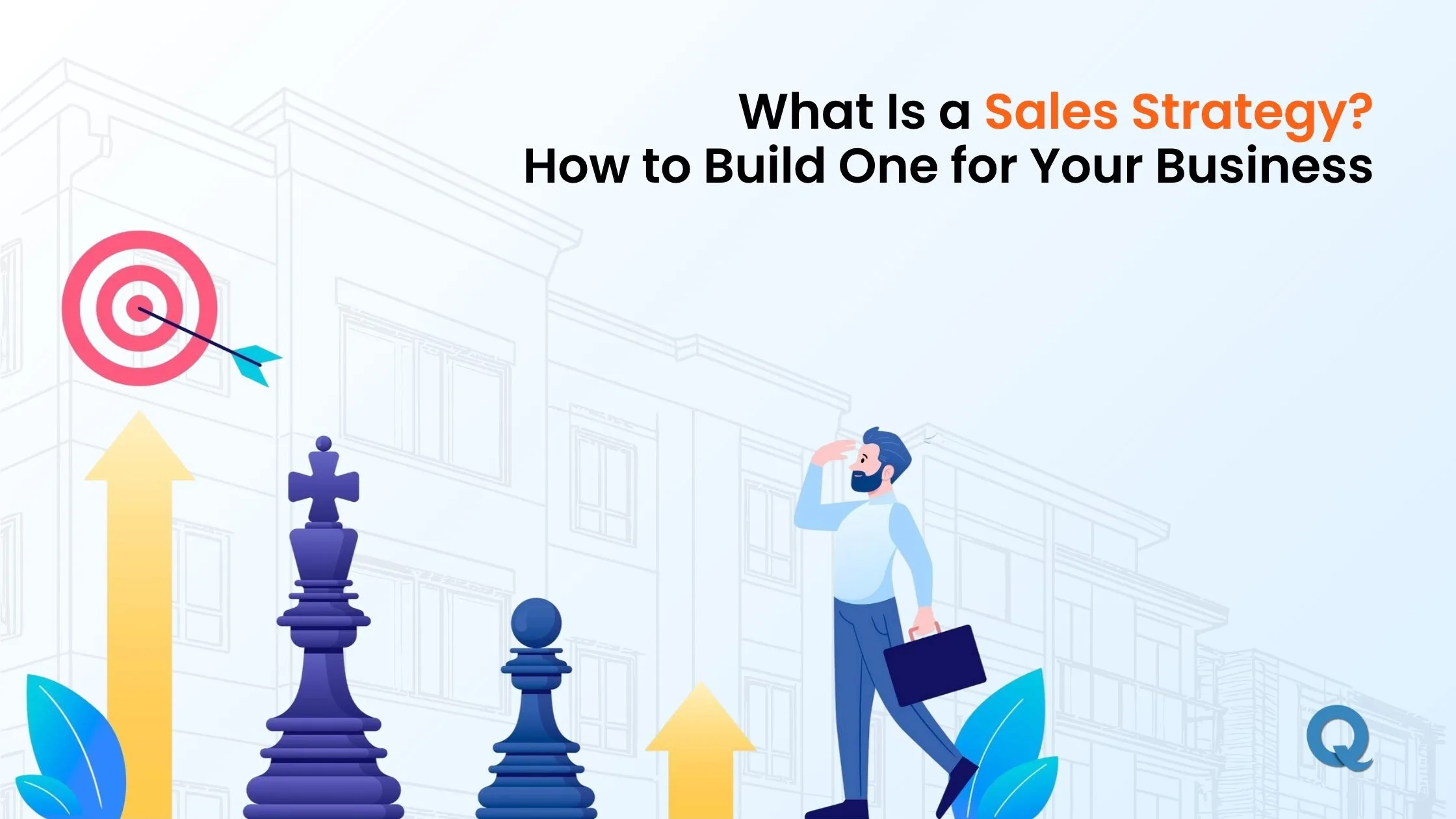
Slow growth in sales might be the result of not having a clear business plan. Even with a lot of effort, a bad approach might make you miss some great chances.
A well-developed sales strategy gives you the guidance you require. It helps you pay attention to the main goals of customer acquisition and successful deal-making. Making a clear map for your sales process makes everything work better.
This guide will give you instructions on building a sales plan that fits your organization’s needs. In the end, you will get a plan that you can use to find the suitable customers and boost your revenue.
A sales strategy helps you focus on the right customers and make smart decisions. It provides clear goals and a roadmap for your team, making it easier to stay on track and achieve better results.
A sales strategy is your blueprint for how you plan to sell your product or service. It’s the game plan that aligns your team with clear goals, a structured process, and proven methods.
A sales strategy outlines the steps your team will take to turn leads into customers, helping to increase sales and grow the business. It includes deciding on pricing, marketing tactics, sales channels, and how to measure success. A good sales strategy is tailored to your business’s strengths, the market you’re in, and your customer’s needs.
Think about it this way: If you were planning a road trip, you wouldn’t just get in your car and hope to reach your destination. You would map out the best route, identify the stops along the way. Your sales strategy is no different.
When you know your destination and the steps to get there, your chances of success increase. A good sales strategy helps you reach the right customers, save time and resources, and boost your revenue.
A sales strategy helps your business grow by making sure you focus on the right customers. Instead of trying to sell to everyone, it helps you find people who are most likely to buy. This saves time and effort, and helps you make more sales.
A clear strategy helps your team understand what needs to be done. When everyone knows their part, it’s easier to get things done. This also lets you adjust quickly with market trends and keep things moving forward.

Sales strategies can generally be broken down into two main types: “Inbound and outbound”. Both have their strengths and can be effective, depending on your business model, market, and customer preferences. Here’s a closer look at each one.
An inbound sales strategy focuses on attracting potential customers by providing valuable content and engaging with them meaningfully. Instead of reaching out directly to leads, you create content that draws them in. The goal is to educate, build trust, and offer value so that, when it’s time to buy, customers view your business as the solution to their problem.
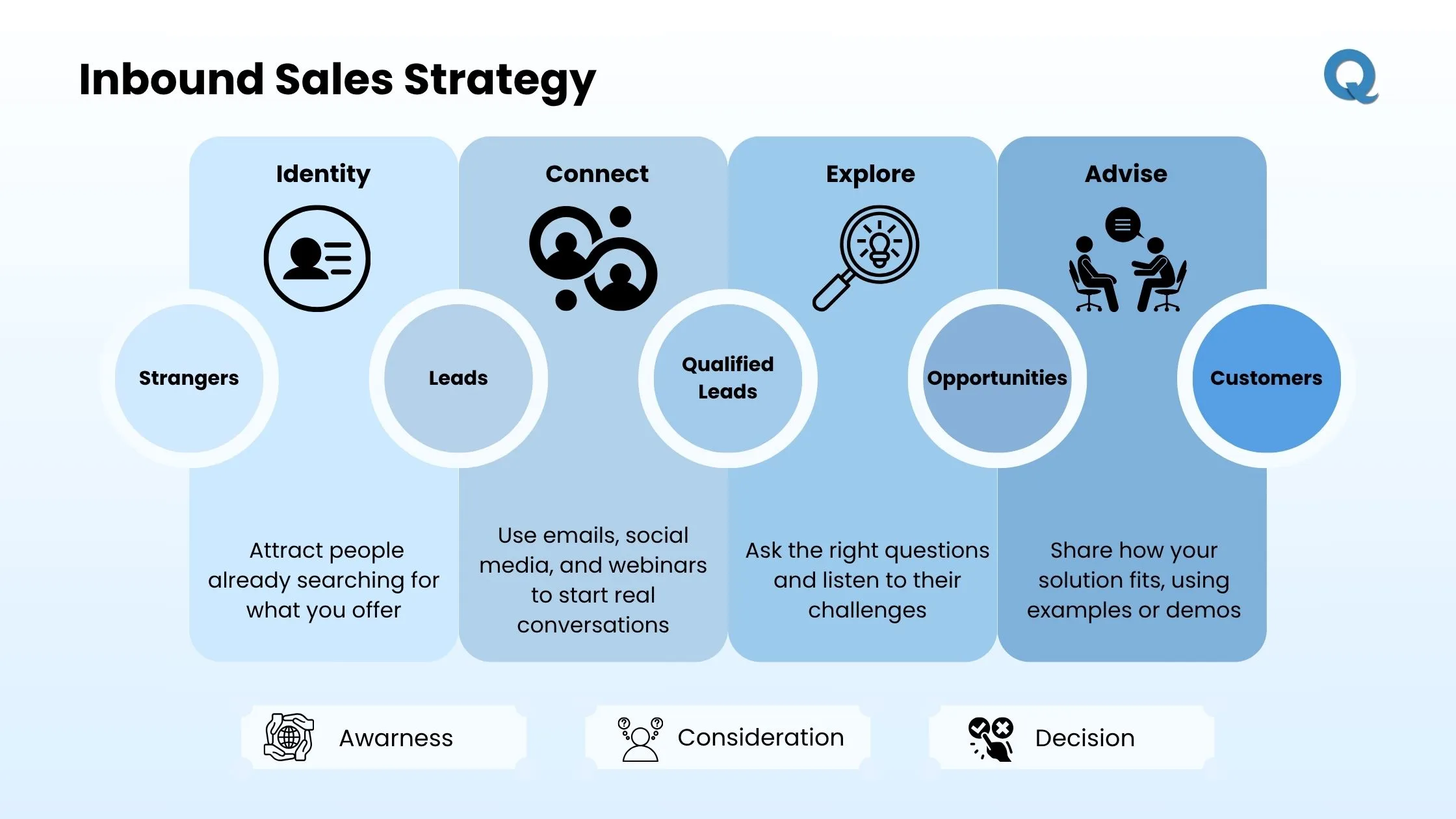
To make your inbound sales strategy effective, consider these key steps:
HubSpot increased its business through the use of inbound sales techniques. Instead of cold calling, HubSpot started helping people by providing content like helpful blogs, useful tools and online lessons to attract potential customers. This approach helped them build trust and position themselves as a go-to resource for marketers and salespeople.
As a result, HubSpot saw impressive growth, surpassing $15 million in annual revenue, which confirmed the success of its inbound marketing approach.
Outbound sales are more direct. It means contacting potential customers who might not yet know about your business. This might include activities like cold calling, sending emails, or attending events. The goal is to introduce your product or service to people who could benefit from it.
Outbound sales takes more work, but it opens doors to new opportunities. It allows you to reach people who may not be looking for your product but could still find it useful.
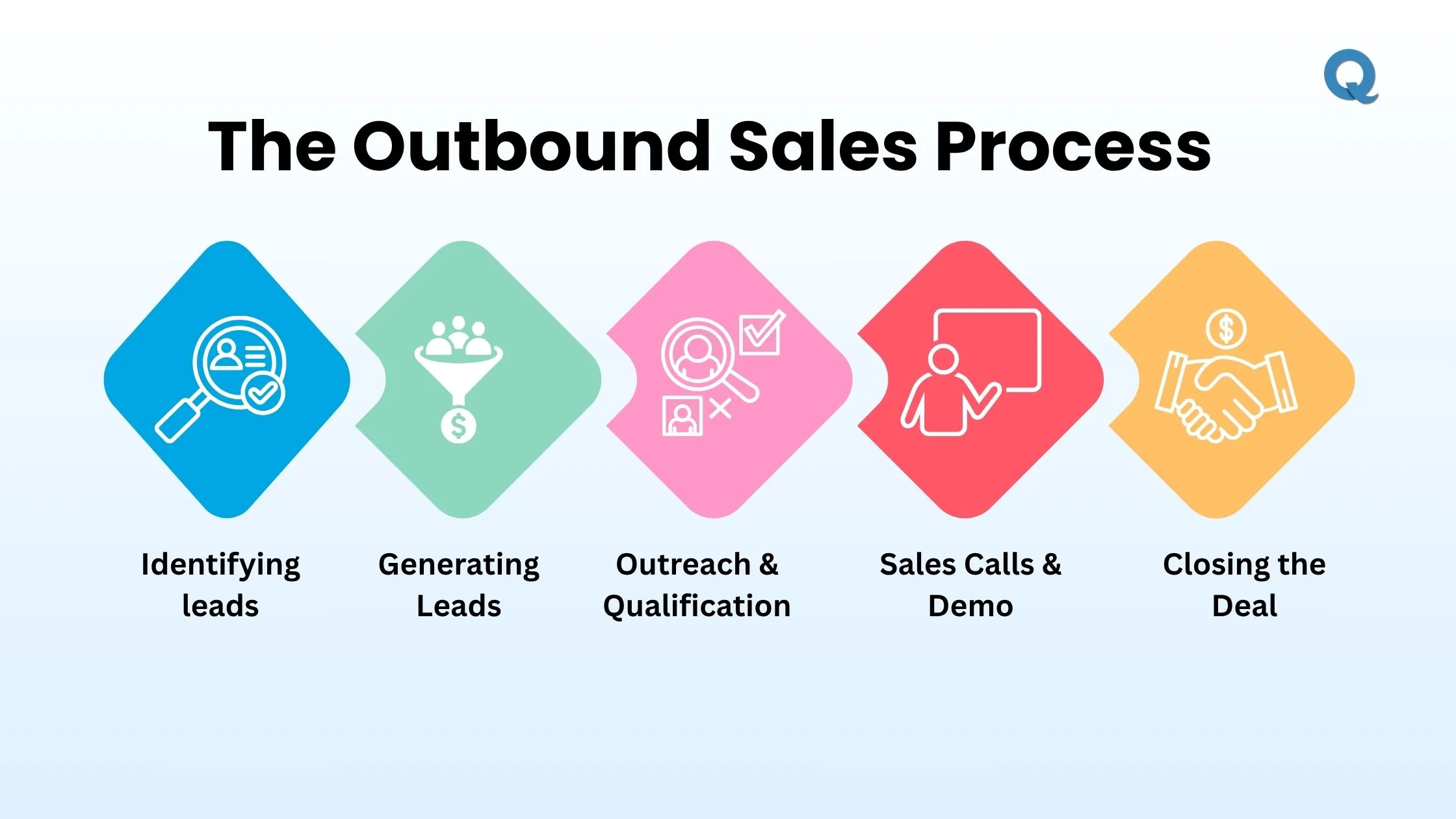
Here’s a simple breakdown of outbound sales strategy:
Microsoft reached out to new clients, particularly small and medium-sized enterprises, through outbound sales. They used emails and phone calls to demonstrate how their Office 365 product could benefit companies rather than waiting for them to approach them.
This approach worked. Within six months, Microsoft saw a 42% growth in new leads. In fact, 59% of their sales came from outbound efforts like these.
A strong sales strategy goes beyond pushing products or hitting targets. It sets a clear path for your team and ensures everyone shares the same goal. Here’s how to create one that works:
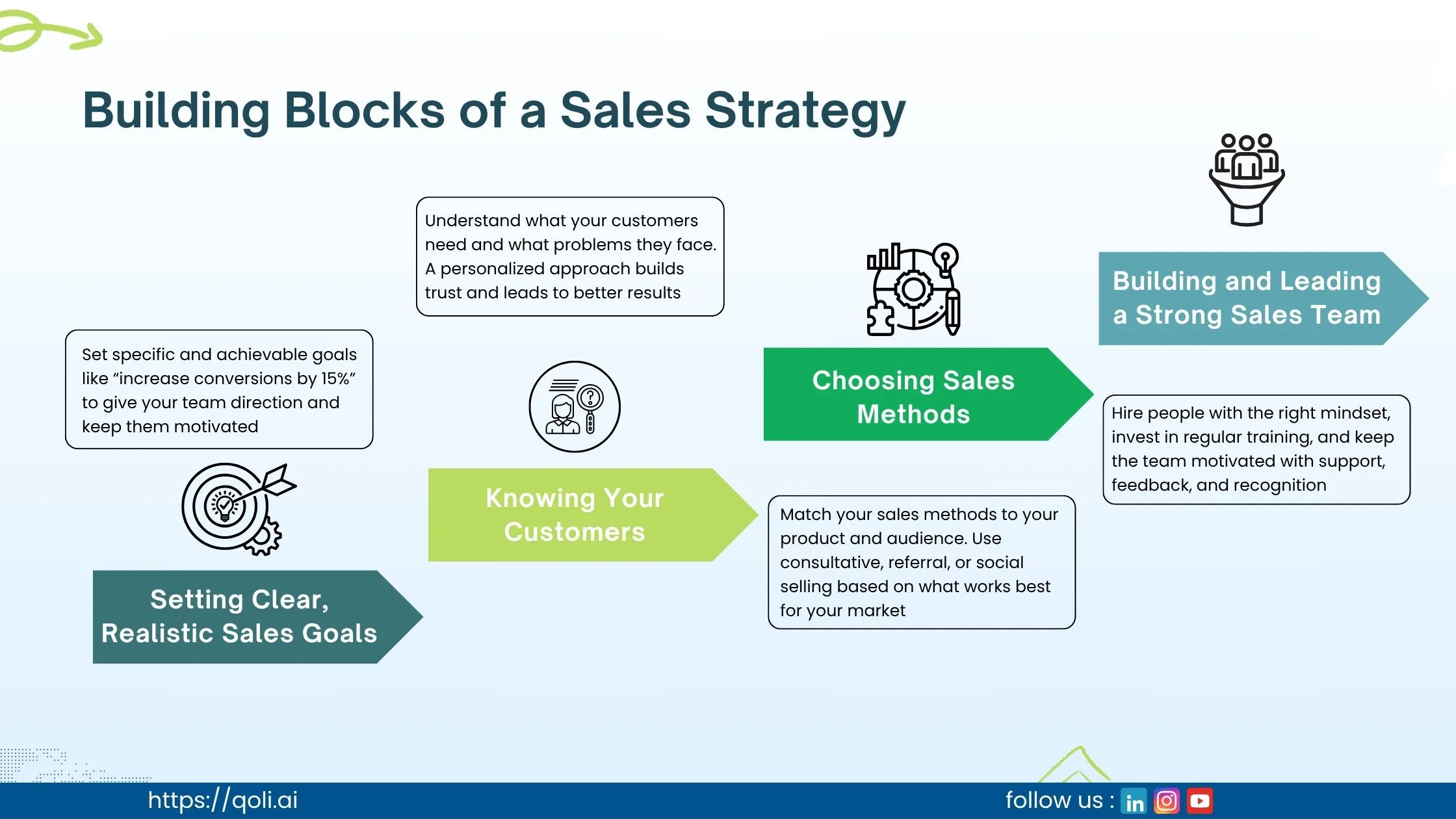
Setting clear goals is the first step in any type of sales strategy. But it’s not enough to just say, "We want to sell more." You need to set goals that are specific, measurable, and realistic.
Instead of a broad goal like “increase sales,” try something more concrete, like “close 50 deals this month” or “increase conversion rates by 15% next quarter.” These kinds of goals give your team a clear target to work towards and make it easier to track progress.
If the goal is too big or unrealistic, it could demotivate your team. If it’s too general, they won’t know what to focus on. Clear and achievable goals are key to keeping everyone on the same page and moving in the right direction.
Gaining an understanding of your customers is very important. The more you learn about their needs and challenges, the easier it becomes to customize your approach. Take Amazon, for example. They use data from your browsing and purchase history to suggest products, offering a personalized shopping experience that encourages repeat business.
The sales method you select needs to match your type of business, product, or service and the way your customers like to buy. A different concept can work better with a different audience, that is why it is good to know what works best with your audience.
Your business depends on the strength of the sales team. You will need both the proper team and helpful support to achieve your goals. Here are some steps for creating and leading a group that is at its best.
Pay attention to more than just a person’s skills during the hiring process. Get in touch with those who will help your company uphold its core values and principles. The right mindset and attitude can help people a lot and result in great achievements.
As sales tools and methods continue to change, your team must keep learning to stay ahead. Regular training helps your team understand new tools, improve communication, and adapt to customer needs.
Salesforce is a prime example of a company that saw success through training. They provide ongoing learning opportunities through Salesforce University, offering courses and certifications to keep their sales teams sharp. This investment led to a 30% boost in sales performance.
Being motivated greatly helps one succeed. Ensure you mark every success, big or small and let your team know how much you appreciate them. Establish objectives and guide your employees so they can get better. Encouragement in a team leads to their best performance.
Having a strong sales strategy ensures your team knows their goals and remains united. As each business is different, your strategy needs to be different too. Here’s a simple guide to help you create a sales plan that works for your business.
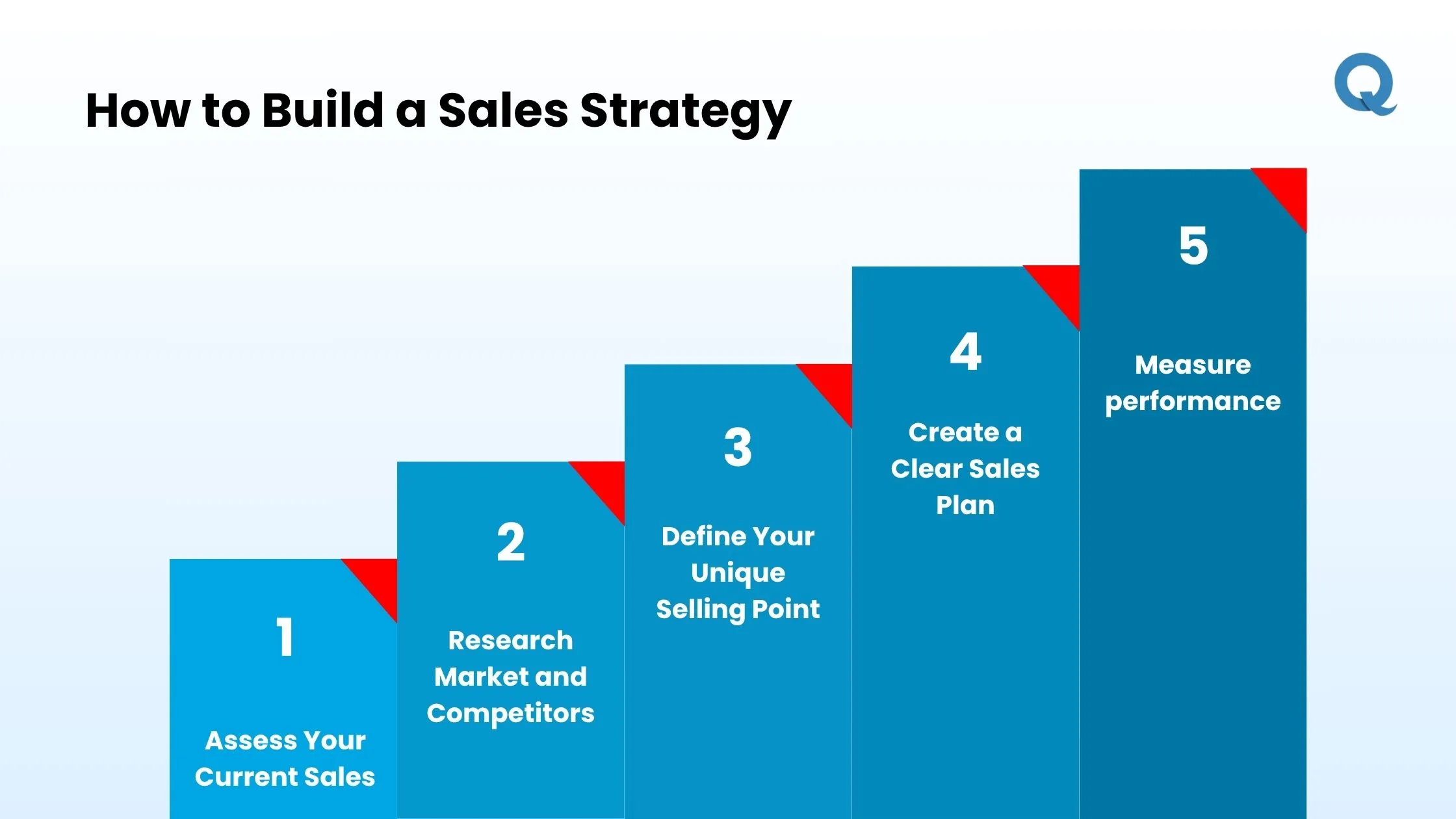
Before you start constructing your tactics, see how you currently hold up. How is your team performing? Are you reaching your goals? What’s working, and what’s not?
Begin by looking at your sales performance, including conversion rates, length of sales cycle and deal size. But also, consider customer feedback and input from your sales team. This gives you a clear understanding of where you’re strong and where you can improve.
It is important to learn about your market and the competition. Begin by finding out who represents your ideal customers. Which problems do they have and what do they hope to find?
According to CB Insights, 42% of startups fail because there’s no market need for their product. Knowing the competition and understanding market needs will help you stay focused on the right opportunities.
So, take time to research your competitors. What do they have to give and how are they presenting themselves to the audience? This lets you find out where there are chances for you and where you can be successful.
What sets your business apart from the competition? This is your Unique Selling Point (USP), the reason customers should choose you over others. USP refers to the distinct factor or feature that makes your product, service, or business different.
To find your USP, think about what makes your product or service special. Do you offer better customer support? Is your pricing more affordable? Or maybe your product has a unique feature that no one else provides. Whatever it is, your USP should highlight what makes you the best option for your target audience.
The sales plan leads to your team's success. It provides the direction and steps needed to reach your goals.
The first step is to make sure your sales team knows exactly what to achieve. Which results do you hope to see in the month, quarter or year ahead? Break down your bigger goals into several steps that are easier to finish. Afterward, decide how you will reach those targets with the help of certain methods and tools.
Your plan should include:
Once your strategy is in place, measuring performance is crucial. By tracking key sales metrics, you can identify what’s working, where to improve, and make informed adjustments along the way.
Here are the key sales metrics you should track:
By regularly reviewing these metrics, you can spot trends, address bottlenecks, and improve your strategy.
AI has the power to revolutionize your sales by helping you target customers more accurately and automate tasks. With AI platforms expected to reach a $37 billion market by 2025.
Furthermore, McKinsey's Global Survey on AI reveals that 65% of organizations are regularly using generative AI in at least one business function, with marketing and sales being the most commonly reported areas of adoption
With AI, you can make lead generation and qualification faster and more accurate. Tools like HubSpot, Salesforce Einstein, and Marketo track customer behavior across multiple channels like website visits and email engagement to find leads that are most likely to convert.
How It Works:
By automating lead generation, you save time, improve lead quality, and increase your chances of closing deals faster.
The best sales strategies go beyond simply selling products. They focus on building connections, engaging with customers, and creating a brand experience that keeps people coming back. Below are some of the most effective tactics that top companies are using today to stay ahead of the competition.
Looking at real-world examples helps you understand what actually works. Companies like Starbucks and Glossier have used effective strategies to build customer trust, personalize experiences, and drive sales. Let’s explore how these strategies can work for you.
Starbucks has successfully leveraged its rewards program and its app to offer a more personalized experience to customers. Starbucks sends targeted offers, rewards points, and updates right to your phone, making sure you feel valued. This not only gets people to buy more, but it keeps them coming back.
Starbucks' Rewards Program Impact on Sales:
Glossier, the beauty brand, took a fresh approach by using social media to build a community, not just a customer base. The company features user-generated content on Instagram, allowing customers to engage with the brand directly. By creating a sense of belonging, Glossier nurtures loyalty, turning followers into repeat buyers.
Why This Works:
It’s not enough to make a sale once and forget about it. Building long-lasting relationships is where the real magic happens. Happy, loyal customers are more likely to stick around, refer your business to others, and keep buying from you.
Zappos is a great example of a company that has built its brand on outstanding customer service. Their commitment to going above and beyond, such as offering free returns for up to 365 days, has made them a customer favorite. This focus on building strong customer relationships helps drive repeat business, and many customers become brand advocates.
Why It Works:
Building a successful sales strategy isn’t something that happens overnight, but by setting clear goals, understanding your customers, and staying flexible, you can create a plan that works.
Investing in your sales team is another key aspect of success. Provide them with the right training, tools, and incentives to perform at their best. Motivated and well-equipped salespeople are more likely to engage with customers effectively and close deals more successfully.
Finally, remember that your sales strategy is flexible. Stay updated on industry trends, customer preferences, and key metrics to keep your approach effective. Regularly assess performance, identify areas for improvement, and be ready to adjust when necessary.